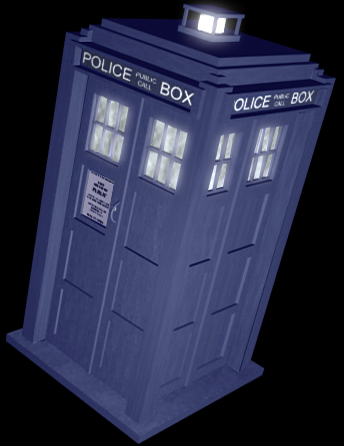If a fourth spatial dimension exists
Einstein said time is the 4th dimension of our universe. So if we can stretch our heads and imagine our 3D universe along with the time dimension then it may still look like some bizarre 3D object. But then with the 4D space our universe would sit in that, perhaps with others and so our time dimension would not affect the 4D space. Maybe the 4D space has its own time dimension?
Or maybe the time dimension is singular and all other spatial dimensions are stretched along the time dimension.
I have heard the 11 dimensions of string theory, so maybe the ultimate high dimension is time.
As an aside - Quantum Physics seems to take no account of time, or so I have read. I find it hard to grasp but can you imagine many different universes existing all within one space and the particles that exist in our universe only exist in our universe for a certain portion of the time, and at all other times they exist in other universes? I think it would explain why our universe contains mostly empty space because it is really filled with other universes that we don't see.

Responding to:
Dimensions don't work like that. Time-like dimensions don't govern space-like dimensions, anymore than the x axis of a graph can be said to govern the y axis or vice versa.
I don't think anyone knows how dimensions work for sure, it's all theory. Higher dimensions can only be theorized; we can't observe them.
Eg. Adam and Eve's "original sin" was unexpected, whatever was done that justified the great flood of Noah that was then regretted by God, even Jesus's purpose on of of saving mankind from Sin was a change of heart from the old testiment's vengeful god and his actions were not described as applying retroactively to persons that had died well before his life time.
The God of the Christian bible is clearly described not as a being that sees time all at once, but like a medium or fortune teller that is gifted to know or predict only some things.
Well, no, that's not correct. Christian theology does not hold that God has limited knowledge of the future or anything else. Rather, it is widely accepted among Christians that the entire plan of the universe, including man's original sin and so on, was always part of a grand scheme, the goal of which is ostensibly for God and the humans who choose Him to live forever among each other. Questions of "why" go down a whole new rabbit trail, far, far from the point of this thread -- as you veered when you started talking about the so-called "non-scientific theological standpoint". Whereas, my post was entirely my own scientific theory.
_________________
Christianity is different than Judaism only in people's minds -- not in the Bible.
The sub-atomic world and Quantum Mechanics is so bizarre i've sometimes wondered if what we're seeing is part of another dimension of the Universe. We cannot properly perceive it but only see how it influences us or maybe the way it touches our Dimensional space.
ruveyn
Not...this...

_________________
Christianity is different than Judaism only in people's minds -- not in the Bible.
I have wondered that. If you could see the whole EM spectrum would be confusing to say the least. But it would be cool if you could tune your senses into any part of the spectrum at will.
In Computer Programming you can have things called Arrays. Which are memory stores for holding a list of data. Arrays can be multidimensional and you can have as many dimensions as you like but it is wise to stick to 3.
So a 1 D arrays will store a simple list. A 2D array will store a grid of data (images are stored in main memory like this). A 3D array would hold data relating to a moving image (a collection of images, or multiple 2D arrays), or masses of scientific data etc.
But you can have 4D arrays too. So in the film the Matrix the universe may be stored as a 3D array (or 4 with the time element). But beyond may be more dimensions representing the other universes.
Stories about Columbus gave a good demonstration how dimensions work, as Columbus didn't sail off the edge of the Earth.
I know we can't see water boil in a dark room, but it's a moderately safe bet that the water will boil around a 100 degrees C at standard air pressure even in a dark room.
Maybe basic Dimensional Analysis will help: "Most physical quantities can be expressed in terms of combinations of five basic dimensions. These are mass (M), length (L), time (T), electrical current (I), and temperature, represented by the Greek letter theta (q). " From: http://www.physics.uoguelph.ca/tutorials/dimanaly/
Per "If A Fourth Spatial Dimension Exists", confusion over the coordinate system must be avoided too, not just the number of independent vectors required to determine a unique "point". A simple example is the surface of a sphere requires two distinct coordinates to determine a point on the sphere, but three vectors are involved, and in a convenient coordinate system, one of the three vectors can be held constant and ignored, since the restriction is placed of the example of remaining on the surface of the sphere. Mapping the surface of the sphere to the "flat Euclidean plane" for a conventional map works good for a small area, but for larger areas, the distortions become great, as with a Mercator Projection Map or a Great Circle Map of the Earth.
A coordinate system does not require orthogonal vectors (orthogonal vectors tend to be the most convenient to use though), as only the minimal number of independent vectors are required. In the sphere example, on leaving the surface of the sphere, the vector conveniently held constant previously, must then be considered, and 3 dimensions are then required to determine a "point", say the Longitude, the Latitude, and the altitude for locating the point. Since the altitude is now regarded as to vary with the Longitude and Latitude, the sphere now has a different degree of curvature for areas around a particular Longitude and Latitude. On a well mapped/known surface, the curvature can be recorded as an attribute with two components of the fixed surface (Gauss Curvature, which has a maximum with orthogonal vectors in the tangent plane, as a simple standardized measurement of a vector product in two dimensions). The particular location on the surface of the Earth still only requires two numbers, but the "manifold" (as distinct from the surface of the perfect sphere) has the changing altitude, requiring a third number, and the concept of variable curvature of an area of the surface of the manifold associated with each distinct point.
Now while being stuck on the two-dimensional surface of the Earth, the easily verified attribute of altitude for each point on the surface gives a third dimension required to "embed" the two-dimensional surface into three-dimensions to account for the measurement/observation of altitude. Though, on a high-altitude flat geographical-plane on the surface of the Earth, the Earth is large enough that a human standing on the surface doesn't "see" the altitude nor the curvature of the Earth, but both the altitude and the curvature can be "observed" by using measurement tools.
At high relative velocities, (and velocity is measured by 4 dimensions (speed is measured by two dimensions)), the finite speed of light must be taken into consideration in making relative measurements, and the possible confusion between "seeing" and "observing" is a more entangled riddle best summarized as "Terrel Rotation":
http://www.math.ubc.ca/~cass/courses/m3 ... rell1.html
and the "curvature of axis" effect:
http://www.math.ubc.ca/~cass/courses/m3 ... ture1.html
With gravity, the 4 dimensions of space-time is "curved", which results in observable measurements of the curvature, and in which requires 5 dimensions to be embedded in for a full "intuitive" sense of the 4-dimensional manifold of the curved space-time.
One history has the confusion between "seeing" and "observing" recognized in:
http://www.guspepper.net/electro/Segund ... /Funez.pdf
and with other resulting effect examples at:
http://hep.sdu.dk/FY504/FuzzyGerry.pdf
Tadzio








